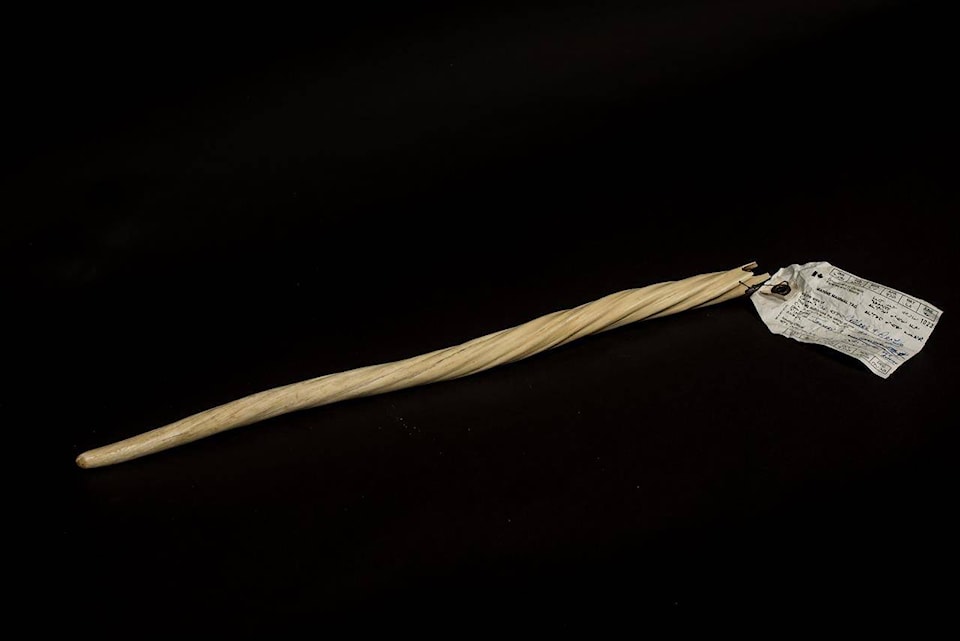A more than four-decade-old narwhal tusk found in a Goodwill donation pile is about to get a new home at the University of Calgary.
Goodwill is giving the 60-centimetre-long spiral canine tooth from a marine mammal often dubbed the “unicorn of the sea” to the university’s Arctic Institute of North America.
Goodwill spokeswoman Shannon Black says the tusk had federal hunting tags from 1978 attached that say the animal was harvested from the central Arctic.
She says it’s not known who donated it and she can’t speculate as to whether its most recent owner knew how valuable it is.
The not-for-profit, which raises money for people with disabilities, receives precious donations from time to time, including a collection of Second World War medals last year and an authentic Louis Vuitton bag a few months ago.
Goodwill is to hand off the tusk to the institute at a closed celebration, in keeping with COVID-19 guidelines.
“We’re just so honoured that we were able to ensure and secure the right home for it. We’re looking forward for it to be a teaching tool for years to come and hopefully helping to preserve the integrity of narwhal whales in Canada’s Arctic,” said Black, Goodwill’s brand manager in the Calgary region.
Shannon Christoffersen, the Arctic Institute’s manager of data and information services, got the surprising email from Goodwill about a month ago.
“You don’t really hear about narwhal tusks getting dropped off at Goodwill,” she said.
“It is significant for us because we have not previously had a narwhal tusk in our collection — I think partly because it’s a marine mammal and we don’t exactly have access to a lot of those in the Calgary area.”
She said she wasn’t sure at first whether the institute could legally receive the tusk under federal rules. But because it was harvested so long ago, and still has its permits and tags attached, it got the all-clear.
Sandie Black, a veterinary medicine professor at the university who is also head of veterinary services at the Calgary Zoo, believes the tusk was from a young narwhal between three and five years old. Tusks can grow up to three meters long.
She said the animals are an important food source for many Arctic communities and their tusks are often carved by Inuit artists.
Lauren Krugel, The Canadian Press
